Senior Spotlight
‘You can see the painter’s thoughts through the brushstrokes’
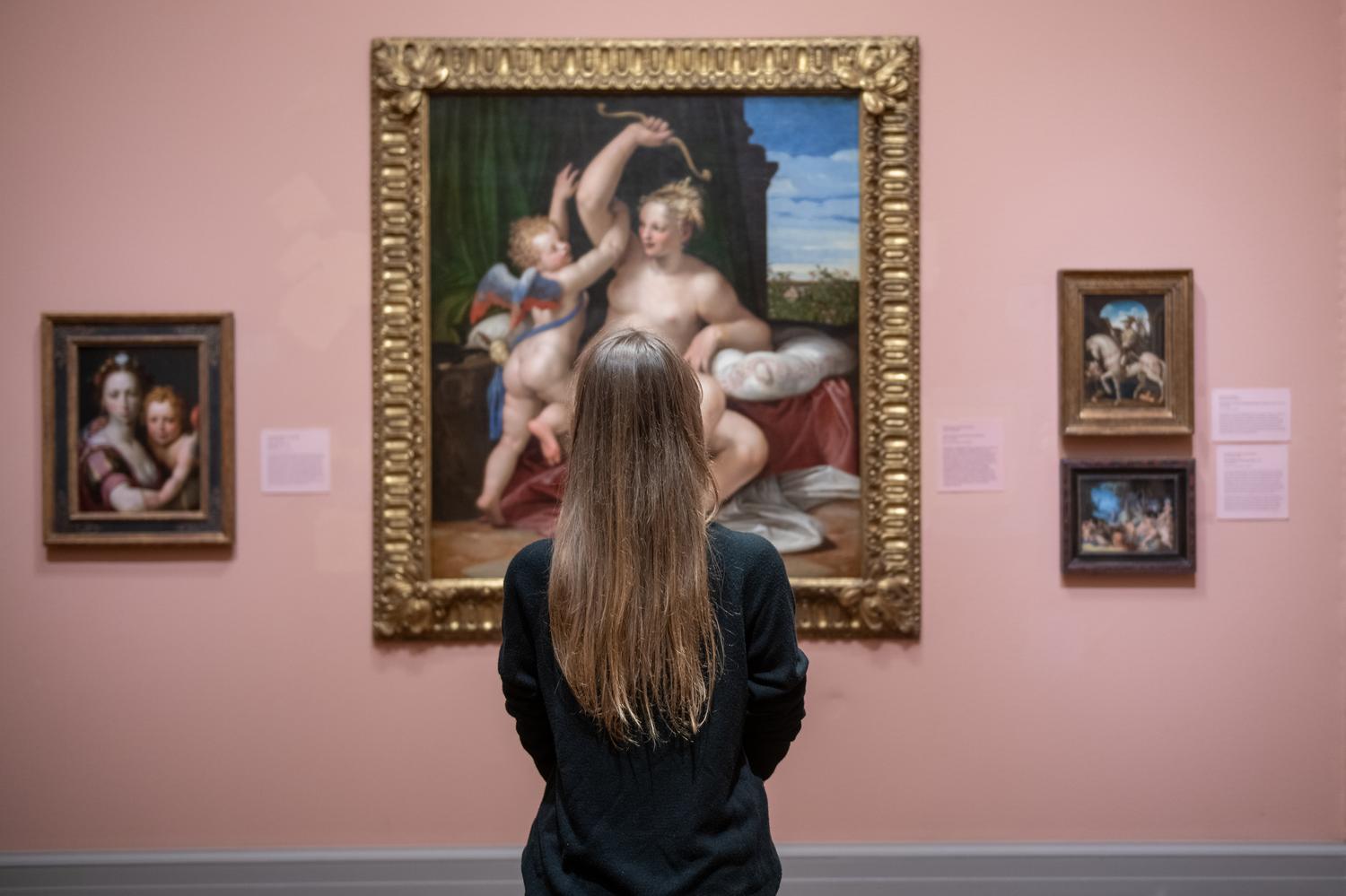
“It’s fulfilling to see my work come to light and to uncover more about this understudied area of art history.”
Emily Abney ’24 felt awestruck as she gazed at the statue of David, the 17-foot marble masterpiece by Michelangelo.
David, among the most significant artworks of the Italian Renaissance, was pivotal in Abney’s decision to study art history. One night during her first year at Clark, Abney turned the pages of a tabletop art book she was reading for “Art in the Age of Michelangelo,” a First-Year Intensive course with art history Professor John Garton, and became mesmerized by a close-up shot of David’s face.
“No one really gets to see the face of David and look into his eyes, so seeing it blown up in this book was incredible,” Abney says, excitement palpable as she revisits the memory. “The statue depicts the split second David sees Goliath in the Hebrew Bible and Old Testament story. You can see the fear in his eyes, but his body hasn’t had a chance to react yet, so his muscles haven’t quite tensed up.
“I found that rendering of a split-second emotion incredibly beautiful and masterful,” she continues. “It made me a little bit emotional to see it in person. It was incredible.”
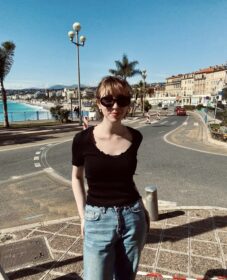
Abney, an art history major, recently returned from a research trip to Venice, where she studied art central to her thesis. Professor John Garton advised Abney in preparation for the research trip, which was supported by the Dean of Students’ Office. She visited cultural and historical institutions in Venice such as the Ca’ d’Oro and Gallerie Dell’Academia, both art museums, and the Doge’s Palace, formerly the seat of Venetian government.
Last year, Abney spent the spring 2023 semester in Italy, soaking in the area’s Renaissance art and observing historical artifacts like an Etruscan arch from the Roman Empire.
“I was in this beautiful Italian village called Perugia, where, Perugino, the artist who trained Raphael lived. My apartment was meters away from his workshop and fell in love with Renaissance art all over again,” she says. The previous semester, she studied art theory in the Netherlands and traveled around Europe to observe works such as the Ghent Altarpiece.
To Abney, it’s essential to see art first-hand; it provides a visceral, intimate experience unattainable through textbooks or imagery. “You can see the painter’s thoughts through the brushstrokes if you’re looking at a painting in person,” she says.
While studying in Italy, Abney settled on the topic for her senior thesis, “The Birth of a Venetian Venus: From the Page to the Painting” which examines paintings of the Italian Renaissance and is advised by Garton. Her paper explores allegorical nude portraiture of the pagan goddess Venus, particularly the characterization of Venus in artwork compared to the original Latin texts of Ovid.
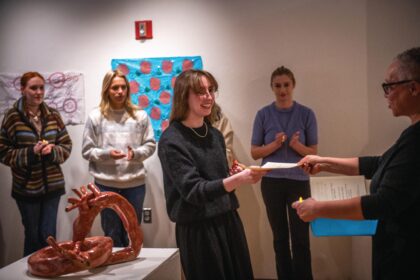
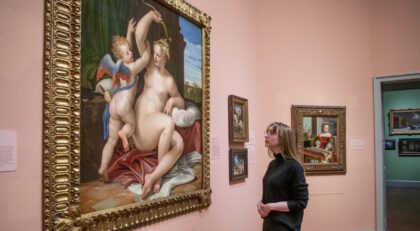
In paintings, Venus’ attributes of fertility and sexuality are common, Abney has discovered, a foil to the original Ovidian texts in which the goddess is a complicated character who can be vengeful and angry, similar characteristics to an everyday person.
Abney’s research indicates that women in Venice were internationally known and celebrated for their elaborate elegance and beauty. Abney believes this, in culmination with the printing and publishing of Ovid’s text in 15th and 16th century Venice, were factors that led to the commissioning of nude portraiture.
“There’s a difference between being naked and being nude in art. Nakedness is tied to vulnerability and shame,” she explains, “nudity is a proud celebration of one’s figure and the agency to show off one’s body.”
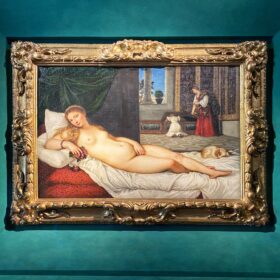 At the Uffizi Gallery in Florence, Abney surveyed “Venus of Urbino” by Titian, a 16th-century Venetian painter who helped spearhead the genre of allegorical nudes of Venus and was a springboard for Abney’s research. The painting depicts a nude woman reclining on her side in bed and holding roses. “Luxurious fabrics are around her, creating a juxtaposition between the softness of her skin and the sheer silky bedsheets,” says Abney.
At the Uffizi Gallery in Florence, Abney surveyed “Venus of Urbino” by Titian, a 16th-century Venetian painter who helped spearhead the genre of allegorical nudes of Venus and was a springboard for Abney’s research. The painting depicts a nude woman reclining on her side in bed and holding roses. “Luxurious fabrics are around her, creating a juxtaposition between the softness of her skin and the sheer silky bedsheets,” says Abney.
The piece has stirred controversy about whether the painting’s message is erotic or empowering.
“People can read it as objectifying, exploitative, and painted for the male gaze because it was commissioned by a man,” Abney explains. “These are all valid arguments. But it’s important to read into the context of the society in which these pictures were commissioned without excusing any of the sexist hierarchies and laws that were put in place to control.
“I feel that even though it was commissioned for a man through the male gaze, Venus is very much in control of the picture because she’s looking at you,” Abney continues. “She’s not necessarily a passive object for sexual desire; she’s reclaiming her sexuality and taking control.”
Growing up with an artist mother and historian father, Abney visited museums often as a child. However, she entered college anticipating to major in psychology. She changed course after “immediately falling in love” with art history during her FYI with Garton. “It felt so right,” she recalls.
Later this semester, Abney expects to work with the Worcester Art Museum conservation department to learn about the pigments in Venetian nudes and the restoration techniques used to maintain the pieces. She also plans to visit museums in the coming months with the Clark Museum Meanings club, which Abney co-created with fellow art history major Nora Rueffer ’24 to facilitate discussions on contemporary museum issues like repatriation, art smuggling, and accessibility.
Abney has applied to graduate school to continue her studies and recently received her first acceptance letter from the Courtauld Institute of Art in London.
“I love learning something new every day when I’m studying,” Abney says. “It’s fulfilling to see my work come to light and to uncover more about this understudied area of art history.”


